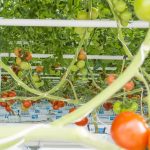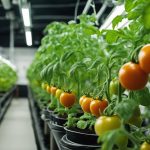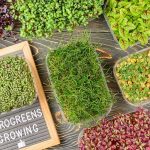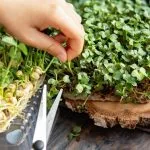Choosing the best container for hydroponic tomato cultivation is crucial to the success and yield of your plants. In hydroponics, tomatoes thrive when provided with the appropriate environment, and the container plays a significant role in this. As you venture into the world of soilless farming, understanding the nuances of container selection can mean the difference between a bountiful harvest and a lackluster yield.

So, what is the best container for hydroponic tomatoes, and what are the factors that influence the choice? It’s important to bear in mind factors such as size, material, and design. Net pots are commonly used and are ideal because they allow roots to grow through their mesh sides, facilitating better nutrient and oxygen uptake. The size of these pots should reflect the growth potential of your tomato plants; larger varieties will need more space than smaller, determinate types. It’s also vital to ensure that the containers are made from non-toxic materials and are sturdy enough to support the plants throughout their growth cycle.
Choosing the Right Hydroponic System
Selecting the appropriate hydroponic system is essential for success in growing tomatoes. The container you’ll use is highly dependent on the system you select, whether it’s a compact unit for growing tomatoes hydroponically in 5 gallon buckets or a larger, more complex setup.
Ebb and Flow Systems
Ebb and flow systems, also known as flood and drain, are versatile and allow you to use a variety of containers. You’ll need a tray large enough to hold your plants and a reservoir beneath it. This system periodically floods the roots with nutrient solution, then lets it drain back, making it suitable for tomatoes, which require a well-oxygenated root environment.
Deep Water Culture (DWC)
For Deep Water Culture systems, plants are suspended in a solution of nutrient-rich, oxygenated water. A basic DWC setup often uses a tank or a bucket with a lid to support the plant and an air pump to oxygenate the water, ensuring healthy root growth and nutrient uptake.
Nutrient Film Technique (NFT)
When using NFT systems for your tomatoes, you’ll have plants in channels where a thin film of nutrient solution constantly flows over the roots. It’s efficient on water and nutrients and containers for NFT systems are typically long and shallow channels that are relatively easy to manage.
Dutch Bucket Systems
Dutch bucket systems, while similar to DWC, are ideal for larger plants like tomatoes, as each plant is given its own bucket, allowing for more space and individualized care. Buckets are connected to a central reservoir and work well for growing tomatoes hydroponically in 5 gallon buckets, where the nutrient solution drips into each bucket before draining back.
Kratky Method
When growing tomatoes kratky method, it’s a passive, low-maintenance choice that doesn’t require electricity. Plants grow in a container that’s partially filled with nutrient solution while the roots hanging in the air zone absorb the oxygen. This method is cost-effective since it eliminates the need for a pump. For heavy feeders like tomatoes, select a determinate tomato variety and use large containers that you can keep topping off as well as easily drain and flush.
Aeroponic Systems
These systems mist the roots with nutrient solution. They can be very efficient and promote rapid growth. However, they are more complex and can be more expensive to set up and maintain.
Selecting the Appropriate Growing Medium
When growing tomatoes hydroponically, you need to choose a growing medium that adequately supports the plants while facilitating proper nutrient uptake and water retention. Here are some of the most effective mediums you can choose from:
Perlite and Vermiculite: Perlite is a volcanic glass that, when heated, expands into a lightweight, porous material ideal for hydroponic gardening. It improves aeration and drainage, which are crucial for healthy root growth. Vermiculite, on the other hand, retains more water and nutrients. A combination of perlite and vermiculite often works well, as it balances air space with moisture retention.
Coconut Coir: Coconut coir, made from the fibrous husks of coconuts, is a renewable and eco-friendly option that retains water excellently while still providing good aeration. It’s also naturally resistant to mold and root diseases, which is beneficial for your hydroponic tomatoes.
Rockwool Cubes: Rockwool cubes are made by melting basaltic rock and spinning it into fine fibers, then compressing it into cubes. They are great for seed starting and transplanting into larger hydroponic systems. Rockwool has a high water retention capacity and allows for good air space, ensuring roots get adequate oxygen.
Expanded Clay Pellets: Also known as Hydroton, these are made by heating clay to high temperatures until it puffs up, creating a lightweight and porous medium. Expanded clay pellets are reusable and have excellent drainage properties, making them a popular choice for hydroponic tomato growth. They can also be easily moved or adjusted to cater to the growing root system.
Formulating the Nutrient Solution
When growing tomatoes hydroponically, creating a balanced tomato hydroponic nutrients formula is key to your success. Your plants’ health hinges on this since they aren’t getting nutrients from soil.
Here’s a checklist to help you manage nutrient levels effectively:
- Check Equipment: Ensure your irrigation system accurately doses nutrients.
- Monitor EC and pH: Keep electric conductivity (EC) and pH levels within ideal ranges for tomato growth.
- Absorption Rates: Understand how much of each nutrient your tomatoes are absorbing. This helps identify if you need more or less of specific elements.
- Adjust as Needed: Alter your nutrient mix based on the plant growth stage and observed health.
Always start with a quality hydroponic nutrient solution designed for tomatoes, adjusting as your plants grow to cater to their changing needs. As you gain experience, you’ll better understand the unique requirements of your hydroponic setup.
Additional Factors That Influence Container Choice
When you’re deciding on the best container to grow your hydroponic tomatoes, remember to consider the system you have chosen as well as the following factors, which can play a key role in the success of your harvest:
- Size and Depth: Your container must be spacious enough to accommodate tomato root systems, which can become quite extensive. A depth of at least 10-12 inches gives roots room to grow and helps ensure the plant’s stability as it matures.
- Material: Containers come in various materials like plastic, fabric, or clay. Plastic is lightweight and cost-effective, but ensure it’s food-grade to avoid chemical leachates. Fabric grow bags provide excellent aeration and prevent overwatering, while clay pots can offer a more stable, though heavier, solution.
- Drainage: Adequate drainage is essential to prevent waterlogging. Your container should allow excess nutrient solution to drain freely, which prevents root rot and other moisture-related issues.
- Transparency: Avoid transparent containers because light can encourage algae growth in the nutrient solution. Opaque containers prevent light penetration, reducing this risk.
- Durability: Choose containers that can withstand the weight of the tomato plants and the water they’ll hold. They should also be resistant to cracking or degradation over time to ensure the longevity of your hydroponic setup.
- Accessibility: You’ll need to manage and harvest your tomatoes, so pick containers that make these tasks feasible. This means not being too high or deep to reach into and possibly featuring openings or detachable sides.
Common Challenges and Solutions
When growing tomatoes hydroponically, choosing the right container can directly impact the management of algae, pests, and the nutrient delivery to your plants. Here’s how to address some of the common challenges that may arise.
Dealing with Algae and Pests
Algae growth in hydroponic systems can significantly impact plant health and maintenance requirements. It competes with plants for vital nutrients, potentially leading to deficiencies, and dense algae can deplete oxygen levels, harming root health and increasing the risk of disease.
Algal overgrowth can also block irrigation channels and emitters, causing uneven nutrient distribution and necessitating more frequent system cleaning. Furthermore, algae can harbor pests and pathogens, disrupt the pH balance of the nutrient solution, and even grow on plant roots, potentially causing damage and suffocation.
Algal growth tends to thrive in containers with more surface area exposed to light. Prevent this by choosing containers that limit light exposure, like those made of opaque materials, and cover any transparent surfaces. Regularly clean the container to prevent buildup.
Pests such as spider mites and aphids are attracted to stressed plants; ensure the container you choose allows for adequate root system expansion and access for inspection and treatment. Containers with smaller diameters might restrict root growth, leading to stressed plants, which makes them more susceptible to pest infestations.
Addressing Nutrient Deficiencies
Your tomatoes will rely entirely on the nutrient solution provided. Inadequate containers may result in poor circulation and uneven distribution of nutrients, causing nutrient deficiencies. Symptoms can include yellowing leaves or stunted growth. The solution is a container that facilitates even nutrient distribution. Containers should be deep enough to support the plant’s growth and have appropriate spacing to prevent root crowding. Regularly check the pH levels and adjust the nutrient solution to ensure your tomatoes have all they need to thrive. Monitoring is essential to detect and address any signs of deficiency early.
Frequently Asked Questions
In this section, you’ll find succinct answers to common questions about setting up and maintaining a hydroponic system for growing tomatoes.






